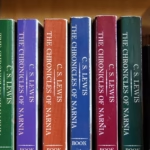Read every series in the right order

Atlee Pine Books in Chronological Order – Complete Reading Guide
Table of Contents
Quick Answer (TL;DR)
Read the Atlee Pine books in chronological order exactly as published:
- Long Road to Mercy
- A Minute to Midnight
- Daylight (crossover with John Puller)
- Mercy
Publication order is the in-universe sequence. You’ll follow an FBI agent guarding the Grand Canyon into a career-defining investigation that merges a national conspiracy with a lifelong search for her missing twin.
Introduction
If you’re looking for Atlee Pine books in chronological order, you’re after a very specific experience: wide-open American landscapes, high-stakes federal cases, and a through-line so personal it rewires every decision the protagonist makes. David Baldacci’s Atlee Pine series gives us an FBI agent posted to the Shattered Rock, Arizona resident agency—one of the Bureau’s loneliest beats—who patrols the Grand Canyon by day and pursues the ghost of her abducted twin by every spare night.
Baldacci’s thrillers are famous for clean, propulsive plotting. What distinguishes Atlee Pine is the dual engine: each book must stand as a crisp federal investigation, yet each also has to move the family mystery forward. The series therefore rewards reading Atlee Pine books in chronological order—you’ll feel the momentum build from canyon trails to back-road Georgia, from a New Jersey raid to a final, harrowing reckoning.
In the guide below, you’ll find a quick-facts table, a clean Books at a Glance grid with buy links, spoiler-light blurbs in chronological order, a character-arc timeline, publication vs. in-world lists, collector and audio tips, and a compact Author Spotlight so you can choose your next Baldacci binge once you reach the end of the road to Mercy.
Quick Facts
| Item | Details |
|---|---|
| Series | Atlee Pine by David Baldacci — 4 main novels |
| Core Genres | FBI procedural, conspiracy thriller, missing-persons mystery |
| Typical Length | ~400–450 pages per novel (trim varies by edition) |
| Estimated Read Time | ~8–10 hrs per book at 250 wpm; ~34–40 hrs for the set |
| Reading Difficulty | Mainstream-friendly; law-enforcement and intelligence jargon explained in context |
| Signature Hook | An FBI agent whose defining case is personal: the childhood abduction of her twin, Mercy |
| Content Notes | Violent crime, serial homicide, abduction/child endangerment (non-graphic), organized crime, federal conspiracies |
| Ideal Age Range | Adult & mature teen thriller readers |
| Media Adaptations | None officially released/announced as of now |
| Best Format Mix | E-book for pace + audiobook for travel days; paperbacks for a matching shelf set |
About the Atlee Pine Book Series
Atlee Pine is an unusual federal protagonist: the Bureau posts her far from big-city field offices to an outpost responsible for the Grand Canyon—mules, trails, tourists, and an unforgiving wilderness that doesn’t care how many badges are on your belt. That solitude fits her: she’s capable, physically formidable, wary of institutions, and long accustomed to doing the hard thing alone.
But she isn’t a lone-wolf caricature. Over four books, Atlee builds a small, fierce circle—anchored by her older administrative assistant Carol Blum, a model of competence and dry wit—while she tackles investigations that keep intersecting with the unsolved abduction of her twin sister, Mercy. Each installment widens the line between Atlee’s day job (protecting public land and the people on it) and her night work (hunting the truth), until those lines fuse into a single pursuit. Read the Atlee Pine books in chronological order and you’ll watch that fusion happen in real time, with escalating stakes, new allies, cross-series cameos, and, finally, answers.
Atlee Pine Books at a Glance
| # | Title | Buy |
|---|---|---|
| 1 | Long Road to Mercy | Buy on Amazon |
| 2 | A Minute to Midnight | Buy on Amazon |
| 3 | Daylight | Buy on Amazon |
| 4 | Mercy | Buy on Amazon |
Atlee Pine Chronological Reading Order
1) Long Road to Mercy
- Setting: Grand Canyon country—steep switchbacks, ranger stations, and a federal patchwork where the Park Service, the Bureau, and bad actors all keep step.
- Inciting case: A slaughtered mule at the canyon’s floor and a missing rider. What looks like vandalism quickly smells like covert movement through a landscape tourists only think they know. Atlee pulls on a thread that shouldn’t exist in her jurisdiction and finds fabric stamped with national-level insignia.
- Core series beat: From page one, Baldacci binds the public case to the private case. The canyon investigation triggers memories of the Eeny-meeny rhyme that split the twins; Atlee’s compulsion to stand between victim and predator has a biography.
- Read for: The desert’s law-enforcement geometry (who owns what, when, and why); the first taste of Carol Blum as not merely an admin but a conscience; a finale that announces this series will swing for big, institutional pitches without losing its human center.
- Best enjoyed if you like: Outdoor noir, federal turf puzzles, and an opening salvo that promises the personal arc is not a marketing hook—it’s the plot’s spine.
2) A Minute to Midnight
- Setting: Andersonville, Georgia—Atlee’s childhood town, where people remember exactly what you’re trying to outrun.
- Inciting case: Ordered to step back after her temper flares on the job, Atlee returns home with Blum to reopen the night Mercy vanished. Instead, she collides with a new serial killer, ritualized staging, and wedding-veil iconography that fractures the town’s brittle calm.
- Core series beat: The past is not passive. Baldacci uses the serial-killer investigation to pry open sealed relationships, showing how families and communities narrate trauma to stay functional—and how those narratives can calcify into lies.
- Read for: Atlee’s origin story deepening; Blum’s resourcefulness; a portrait of small-town politics that doesn’t condescend; answers that feel like clues because the larger Mercy mystery still owns the stage.
- Best enjoyed if you like: Cold cases jolted awake by present-tense violence; hometown reckonings; protagonists who understand that “closure” is a process, not a verdict.
3) Daylight
- Setting: Trenton, New Jersey, and beyond—rowhouses, warehouses, and a fuse lit under multiple agencies.
- Inciting case: Atlee tracks a lead on Ito Vincenzo, the man tied to Mercy’s abduction—and blunders into an operation being run by military investigator John Puller (from Baldacci’s John Puller series), accidentally blowing his arrest. Forced to cooperate, they discover the Vincenzo family is entangled with a wider conspiracy that won’t stay in its lane.
- Core series beat: This is the crossover book that proves Atlee can carry a national-security thriller without dropping the Mercy thread. The duet with Puller works because the two aren’t mirror images: he’s a military scalpel; she’s a federal brawler with surgical instincts.
- Read for: Procedural friction that becomes synergy; a moral calculus where “my case” and “our country” collide; and, crucially, a breakthrough in the Mercy investigation that changes what “hope” means.
- Best enjoyed if you like: Cross-series team-ups that honor both characters; conspiracies with real-world plumbing (contracts, facilities, logistics) rather than pure cloak-and-dagger fog.
4) Mercy
- Setting: Across state lines and years of silence, focused entirely on finishing the thing that started when the girls were six.
- Inciting case: Evidence surfaces that Mercy survived—and left a trail only Atlee can read. The chase now splits the difference between manhunt and family retrieval, with predators who prefer unsolved disappearances to living witnesses.
- Core series beat: The title tells you the assignment: this is the endgame for the personal arc. Baldacci delivers answers that are earned—not neat—refusing to sand down the trauma simply because truth has arrived.
- Read for: A finale that respects the cost of survival; Atlee’s growth from solitary, reactive agent to a leader who can ask for (and accept) help; and a final turn that leaves you satisfied without feeling manipulated.
- Best enjoyed if you like: Series endings that resolve the central mystery while leaving a life beyond the last page.
Series Timeline & Character Development
Atlee Pine — Book 1 shows a physically capable, emotionally compartmentalized agent, calibrated for a post where the nearest backup is hours away. She’s honest about anger and not always careful with it—a trait the Bureau can’t ignore. Book 2 forces her to make that anger useful; to stay in the fight, she must investigate herself as much as the killer. Book 3 moves her into the federal big leagues, proving she can harmonize with other elite operators without diluting her mission. Book 4 confronts her with a truth many survivor narratives dodge: finding what you lost doesn’t restore the person you were before you lost it.
Carol Blum — Not a sidekick; a ballast. Blum’s presence humanizes Atlee, pushes back on her worst tactical impulses, and models a federal professional who knows when to be steel and when to be grace.
John Puller — In Daylight, he’s the necessary friction. His methodology widens the lens of Atlee’s investigation, and the collaboration shows she can adjust tempo without losing agency.
Antagonists — You’ll meet killers, fixers, and bureaucrats willing to trade human lives for operational efficiency. The scariest villains are often systems that make cruelty look like paperwork.
Themes that stick — The book-by-book movement from isolation → partnership, anger → purpose, and fear → truth gives the series its pulse. Read the Atlee Pine books in chronological order and you’ll feel that pulse quicken with every chapter.
Novels Sorted in Order of In-Universe Events
Good news: the Atlee Pine books in chronological order align with publication.
| # | Title | Buy |
|---|---|---|
| 1 | Long Road to Mercy | Buy on Amazon |
| 2 | A Minute to Midnight | Buy on Amazon |
| 3 | Daylight | Buy on Amazon |
| 4 | Mercy | Buy on Amazon |
Novels Sorted in Order of Publication
Exactly the same sequence (years shown for collectors):
| # | Title | Year | Buy |
|---|---|---|---|
| 1 | Long Road to Mercy | 2018 | Buy on Amazon |
| 2 | A Minute to Midnight | 2019 | Buy on Amazon |
| 3 | Daylight | 2020 | Buy on Amazon |
| 4 | Mercy | 2021 | Buy on Amazon |
Companion Works
No novellas are required to follow Atlee’s arc. If you want to branch out by tone or crossover:
- John Puller (4 books) — Daylight shares casework and chemistry with Puller. If you liked that vibe, start Zero Day → The Forgotten → The Escape → No Man’s Land.
- Amos Decker (7 books) — For a more cerebral procedural with hyperthymesia at the core.
- Will Robie / King & Maxwell / The Camel Club — Different flavors of government ops, PI teamwork, and conspiracy ensembles in the Baldacci universe.
These aren’t prerequisites for Atlee; they’re natural next steps once you close Mercy and want that Baldacci pace again.
Editions & Formats (hardcover, collector, audio)
Hardcover
- Best durability and jacket art; early printings of Long Road to Mercy and A Minute to Midnight pair nicely for a matching look.
Trade Paperback
- Portable, readable trim, cohesive spines across newer reprints—ideal for a four-book shelf set.
Mass Market Paperback
- Most compact and budget-friendly; expect tighter typesetting.
E-book
- Perfect for “one more chapter” nights; easy to highlight investigative breadcrumbs and jump back to Mercy-case references.
Audiobook
- Baldacci’s short chapters and scene breaks make the series exceptional in audio. If you like immersion reading, pair Audible + Kindle and sync progress for commutes and flights.
Collector Tips
- Stick to a single format (all HC, all TPB, or all MMPB) for visual symmetry.
- Signed firsts of Book 1 surface more often; full signed sets of all four are rarer.
- Later paperback runs often adopt a consistent series banner—great for clean shelf appeal.
Why Read Atlee Pine Books in Chronological Order?
- Consequence compounding: Each ending raises or resolves questions that directly shape the next book’s choices. Shuffle them and you blunt the emotional torque.
- Mercy arc timing: The truth about Mercy is delivered in staged revelations. Reading the Atlee Pine books in chronological order preserves that stagger—essential for the finale to hit.
- Character growth: Atlee’s trust calibration with Blum, with the Bureau, and with herself unfolds in carefully placed beats.
- Crossover harmony: Daylight threads a John Puller case through the Mercy investigation; the payoff depends on Books 1–2 doing their groundwork.
Author Spotlight: David Baldacci
David Baldacci has been telling stories since his mother handed him a lined notebook and a directive many parents will recognize: write it down. Decades later, that impulse produced Absolute Power (1996), a breakout novel adapted into a Clint Eastwood film. Since then he’s published 50+ adult novels and seven for younger readers, translated into 45+ languages and sold in 80+ countries, with 150 million+ copies in circulation.
What you’ll find across his work
- Velocity with clarity: short, clean chapters that invite “just one more.”
- High-concept hooks that actually pay off.
- Human stakes beneath the tradecraft—he writes competent people who still bleed.
Philanthropy: With his wife, Baldacci co-founded the Wish You Well Foundation, championing literacy across the United States—a mission reflected in frequent library partnerships and advocacy.
Where to go next after finishing the Atlee Pine books in chronological order:
- Want military-grade casework? Read our guide : John Puller.
- Prefer a hyper-observant mind at the center? Read our guide : Amos Decker (Memory Man).
- Crave PI chemistry with D.C. stakes? King & Maxwell.
Media Adaptations (films, TV, radio)
As of now, there’s no officially released screen adaptation specific to the Atlee Pine series. Given the landscape-forward settings, a TV adaptation would be a natural fit—but until Hollywood shows up with hiking boots, the novels are the definitive experience.
FAQs
Do I need to read the Atlee Pine books in chronological order?
Yes. Publication order equals story order, and the Mercy revelations are paced intentionally.
Where should I start?
With Long Road to Mercy. You’ll meet Atlee, Blum, the canyon beat, and the central trauma that shapes the series.
How intense are the books?
Comparable to mainstream thrillers: homicide and abduction themes, some on-page violence (not gratuitous). The emotional intensity comes from the childhood-abduction backstory.
Is there a crossover I need to know about?
Yes—Daylight intersects with John Puller. It’s fully readable on its own but even better if you already like Puller’s tempo.
Best format?
Whichever you’ll finish. If you travel, try audiobook; if you annotate, go Kindle or paperback.
Age suitability?
Adult; mature teens who read thrillers should be fine, but note the abduction content.
Does the series end cleanly?
Yes. Mercy resolves the core mystery while leaving room for Atlee’s life beyond that case.
Final Thoughts
Read the Atlee Pine books in chronological order and you’ll get a four-part arc that never confuses scale for substance. Baldacci pairs national-level conspiracies with a profoundly intimate investigation, letting Atlee grow from isolated desert sentinel to a leader who can take the hand that’s offered—and offer hers. Start at the canyon’s rim with Long Road to Mercy, descend into hometown shadows in A Minute to Midnight, widen the lens with Daylight, and stand in the hard light of Mercy. It’s a journey that respects the reader, the character, and the truth.







